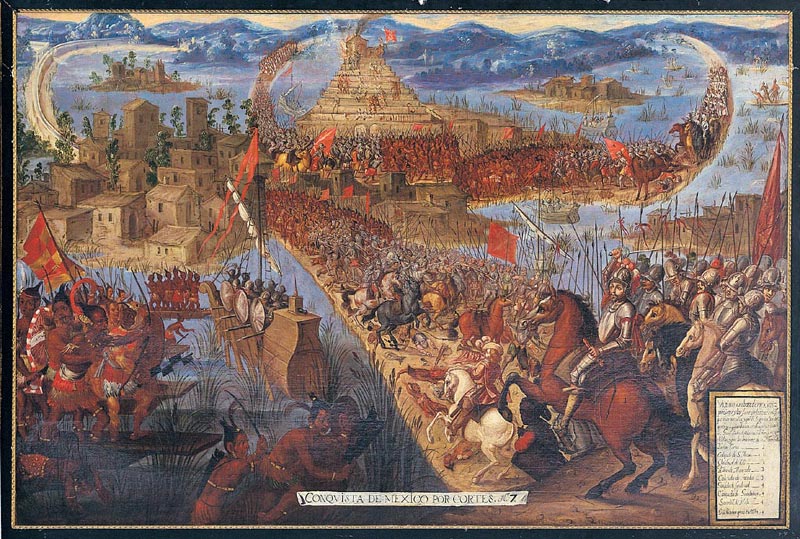The rebel army of Yan fought against the Chinese Tang army in an attempt to take the Suiyang territory. The Suiyang city was under the Defense of general Zhang Xun who had only some 7,000 men. He was facing an army of 150,000.
The siege continued for months, and soon the entire food supply of the defenders was gone. By the end of August, there was not even a fly that could be eaten. Tang, however, was so determined to hold the defense that when he could not get any food into the city, and he did not want to let the enemy in, the food chain drastically changed, and the meals once again were meaty enough.
#1 – Siege of Suiyang (757) Up to 100,000 Killed Or Eaten
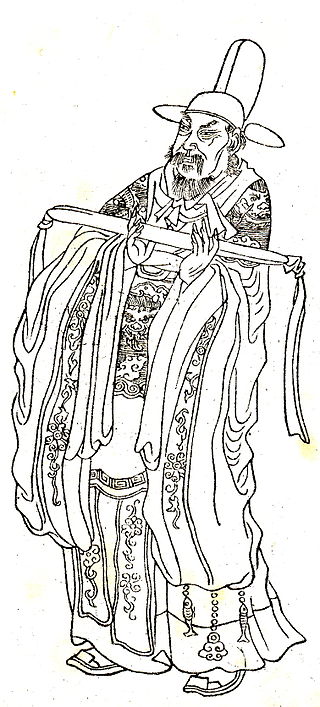
The horrors were now not so much outside the city, but inside. When the famine broke out, women and children were the main courses. Cannibalism was their only means to hold off the siege, and once they run out of women and children, they started eating the old and the too young. Zhang Xun killed his own concubine to feed his troops.
Parents traded their kids for cooked corpses. Approximately 30,000 civilians were devoured, 10,000 defenders and 60,000 of the enemy died. The city fell in October, and since Zhang Xun and his men still refused to join Yan, they were killed.
#2 – Siege Of Kiev (1240) Up to 48,000 Massacred
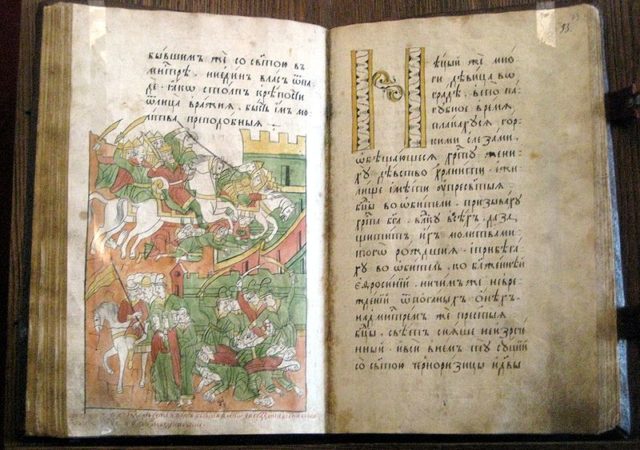
The Mongol horde attack on the city of Kiev is one of the times when a city is almost erased from the map. As is common with the Mongols, at first the enemy had the right to avoid the massacre and surrender. Batu Khan sent his emissaries to the city and offered that option to the commander of the city, Voivode Dmytro. But he refused and killed the envoys.
As expected, that did not turn out so well. Batu Khan besieged the city and after only a few days of intense bombardment, on the 6th of December, the walls were breached, and the entire Mongol army poured into Kiev. The city streets one by one were flooded with the blood of the inhabitants and the Mongols sacked every inch of it and burned most of the city. Approximately 2,000 people were lucky enough to survive the scourge, including Dmytro. After massacring and plundering the city, the Mongols continued on their way.
#3 – Siege Of Baghdad (1258) – From 200,000 to 2,000,000 Massacred
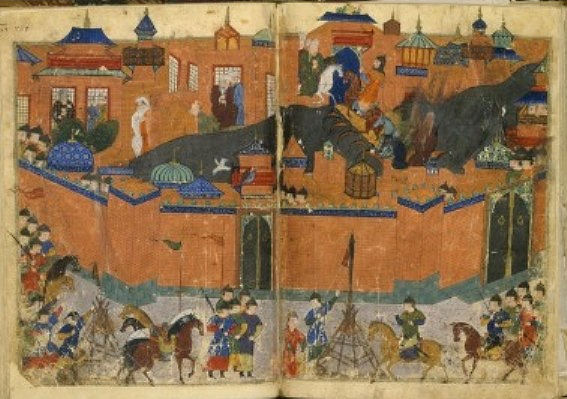
Another part of the Mongol Invasion of Hulagu Khan, the Siege of Baghdad was ten days of restless destruction. Caliph Al-Musta’sim at first had a chance to save his city, but as he refused to pay tribute to the Mongols the fate of one of the most important Muslim centers was sealed.
On 29 of February 1258, Hulagu Khan besieged the city of Baghdad, with a force of almost 150,000 men, including Shiite Muslims, who were not happy with the Caliph.
After five days, during which the city’s defenses were breached, no pleas for mercy or a peace treaty were heard. All nobles who tried to do it were brutally murdered. Another five days later, the city capitulated, and on the 13th day of February, the true horror began. Every building was sacked and destroyed, including the Grand Library of Baghdad. Every small treasure was looted, and in the meantime, no life was spared.
The city was completely depopulated, with losses estimated to go up to 2,000,000 civilians, including women and children, and all military units ( around 50,000). The Mongols ravaged, pillaged, plundered, sacked, raped and destroyed. The Caliph himself did not meet a quick end. He was dragged, tortured and trampled by the horde, and his children were brutally murdered. Only one of his sons was sent to Mongolia, but he did not live a meaningful life. At the end of the complete annihilation, the city was said to stink so much of death and decay that Hulagu Khan had to move his camp away.
#4 – Siege Of Tenochtitlán (1521) – Over 200,000 Killed
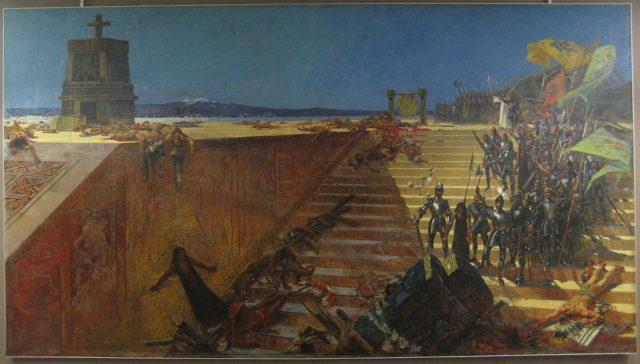
The final battle between the Aztecs and the Spanish invaders, the fall of the Tenochtitlán marked the end of one of the greatest civilizations. The oppressed Aztecs and their leader Montezuma fought against the Spanish conquistador Hernán Cortés. It was a battle in which technological evolution took precedence over force of numbers, and the sight turned into a massive graveyard of the continent’s natives.
The native Aztec Empire managed to gather 300,000 warriors and actually outnumber the invaders and their native allies; the forces under Spanish command were around 80,000 to 200,000 thousand natives and less than 2,000 conquistadors.
At first, it seemed the Aztecs would win their lands back and repel their enemy, but their numbers were greatly reduced by a smallpox outbreak. Also Hernán Cortés ordered the bombardment of the city and in a short time, he successfully destroyed it. As the city was already almost nothing but ruins, the invaders and their generals Alvarado, Sandoval, and Cortés entered the city with guns blazing and on the 13th of August, 1521 the last of the Aztecs surrendered. Some of the Aztec Empire’s allies were able to flee, but others were not so lucky.
Throughout the entire siege, the natives kept true to their customs, including chopping off the heads of their captured enemies at the Altar.
Even after the city had raised the white flag, the Tlaxcalan allies of the invaders continued terrorizing the civilians and sacking the city. Including all possible horrors – raping, stealing and killing without hesitation. The siege that had continued for eight bloody days had caused over 200,000 deaths, mostly of civilians. If we include deaths from smallpox that occurred, the numbers go even higher.
#5 – The Siege of Malta (1565) – Up to 44,000 Killed
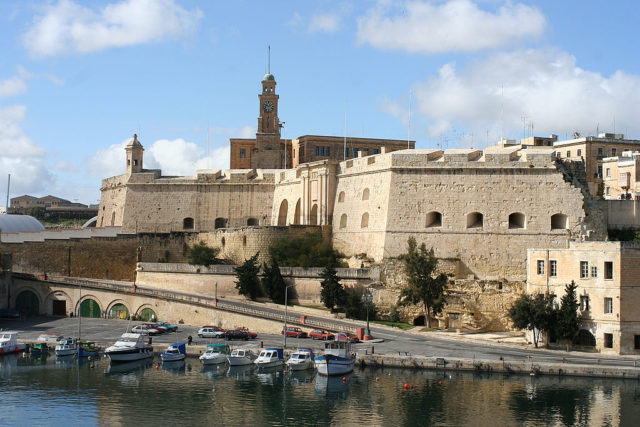
The Siege of Malta, though not as bloody as the previous sieges described, deserves its place on the list for its brutality. The Ottomans tried to take the island of Malta from the Knights Hospitaller, arriving at their shores with an army of almost 48,000 men. The Siege of Malta continued for three months, three weeks and three days, during which civilians and Knights withstood some of the bloodiest and most horrific scenes.
The first stop of the Turkish fleet was the Fort of St. Elmo, a tiny piece land just a thousand yards from Malta. The Knights of St. John who were at the fort managed to hold their position against the might of the Ottomans for a month until their stronghold was nothing but rubble and the entire Turkish army descended on them, slaughtering the knights like animals. Their bodies were decapitated and crucified to serve as a warning.
The Ottomans’ arrival was like a nightmare. They approached the coasts of Malta bringing fear and terror. The waters were flooded with wooden crosses and with the headless Christian knights, who had protected the Fort of St.Elmo.
The Turkish force led by Suleiman the Magnificent greatly outnumbered the defenders, who were only about 700 hundred knights, a couple of thousands of Spanish infantry and the locals. The commander of the small force, Grand Master Jean Parisot De Valette was infuriated and vowed that no Muslim would take over Malta.
For three months the defenders fought the seemingly endless Turkish horde that poured through the broken walls of the forts, and the bombardment of the Ottoman ships but in the end, they successfully repelled the invaders. Only one-fourth of the Ottomans managed to survive and return to their land.
